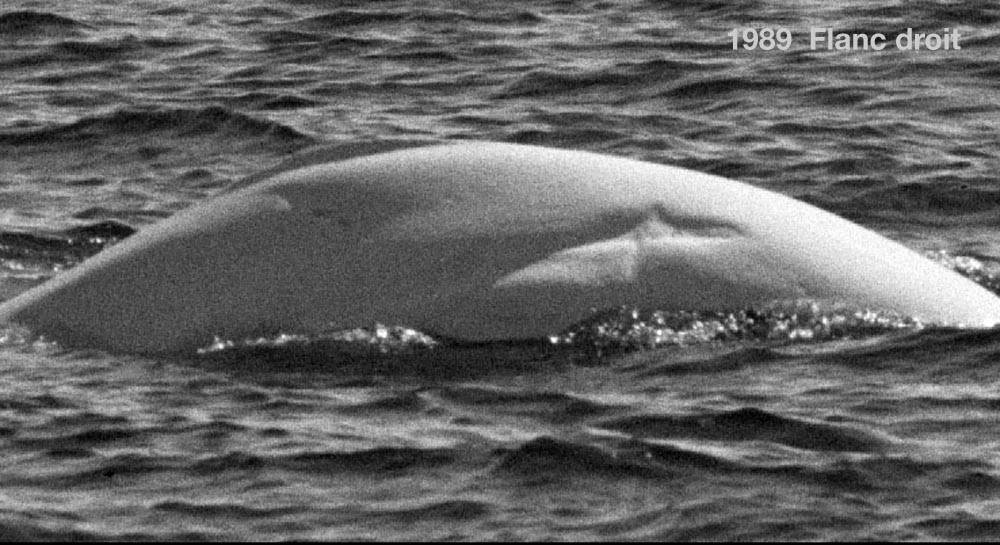Bach
Beluga


Adopted by the employees of the ministère du Loisir, de la Chasse et de la Pêche
-
ID number
DL0097
-
Sex
Unknown
-
Year of birth
Before 1977
-
Known Since
1989
Distinctive traits
Despite its extensive, deep scars on the right flank, Bach is not known from the left. One is below the dorsal ridge and the other, in front of the ridge, is in the shape of a cross.
Life history
First observed in 1989, Bach was completely white meaning this individual was at least 12 to 16 years old at the time.
We’ve only seen Bach three times, so we can’t determine this individual’s sex or summer range. In adulthood, males and females are highly segregated; females live in communities with the young, and males are often found in unisex aggregations.
Two networks of males frequent the head of the Laurentian Channel and the Saguenay Fjord. Another network of males, the “Downstream boys”, also use the head of the channel and the downstream portion of the estuary. Although their territories overlap, individuals from one network have very little contact with males from other networks. Within these networks, there are bands, i.e. small groups of males regularly seen together.
Observations history in the Estuary
Years in which the animal was not observed Years in which the animal was observed
Latest news
Bach was last seen over twenty years ago. We haven’t seen him since 1993. What happened to him? Did he die? Has he remained invisible to the eye of the researcher all this time? Impossible to know at the moment. One thing is certain, his story remains a valuable source of information for our knowledge of this fragile population.
Sponsor
The employees of the ministère du Loisir, de la Chasse et de la Pêche adopted Bach et Sirius (1990).

